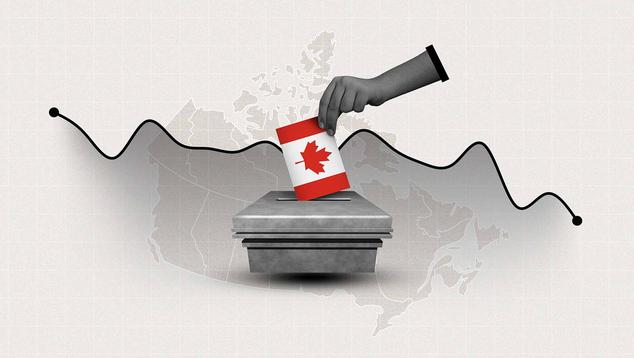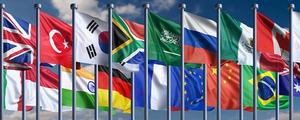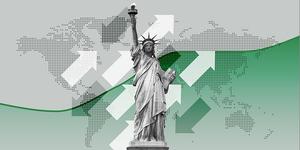LONDON — Canada is on the brink of a defining election, with newly appointed Prime Minister and Liberal Party leader Mark Carney calling a federal vote for April 28. It will be the country’s first election in a decade without former Prime Minister Justin Trudeau, whom Carney replaced last month.
Until recently, polls suggested the Liberals were on track for a decisive defeat against Pierre Poilievre’s Conservatives. However, the political landscape has shifted dramatically since U.S. President Donald Trump’s return to the White House, injecting new uncertainties into the race and reshaping Canada’s broader political dynamics.
While Gallup’s latest polling in Canada — conducted between May and July 2024 — predates Trump’s victory and current tensions between the two longtime allies, long-term trends highlight five key challenges that will shape both the election and the country’s future under its next leader.
1. Reviving Economic Optimism
For much of the past two decades, Canadians have felt considerably more optimistic about their economic direction compared with the median across other wealthy OECD (Organisation for Economic Co-operation and Development) economies. Canada was more optimistic than any other OECD country from 2007 to 2012, when between 54% and 69% of Canadians said their local economic conditions were getting better.
This positive trend continued until Canadians’ optimism plummeted in 2022, with a then-record-low 38% seeing economic conditions getting better. Last year, it dropped to a new low of 33%, which was also notably lower than the OECD median (39%) for the first time.
Rising inflation is largely to blame for Canadians’ increasingly gloomy outlook on their economy. Inflation rose throughout 2021, reaching a peak of 8.1% in June 2022. While inflation is now back around 2%, the OECD recently halved its growth outlook for Canada because of possibly escalating trade tariffs with the United States.
2. Restoring Faith in Public Services
Housing is another key issue for Canadians heading into the election. Satisfaction with the availability of good, affordable housing in Canada has fallen sharply over the past decade, reaching a record low of 22% last year, and placing it notably below almost all of the OECD (aside from Türkiye: 13%).
House prices in Canada have risen significantly over the past two decades. While housing affordability is a concern across most rich economies, Canada stands out for its rise in costs. Real house prices have increased more in Canada than in any other OECD country since 2005, accounting for inflation.
Yet housing is not the only service struggling to maintain public support in Canada. Between 2006 and 2021, a steady average of 74% were satisfied with the availability of quality healthcare in their local areas, before falling sharply to 56% in 2022, and a record low of 50% in 2024.
3. Reversing the Wellbeing Slide
Beyond concerns about the economy, housing and healthcare, Canadians are also viewing their own lives more negatively now than in recent years. In 2024, 44% of Canadians rated their current and future lives positively enough to be considered “thriving” — the lowest level recorded since Gallup began tracking these trends in Canada.
4. Navigating the Relationship With the United States
Canada’s relationship with its southern neighbor and largest trading partner has become the defining issue of the election, after Trump imposed tariffs on Canadian goods and repeated threats to make Canada the 51st U.S. state.
Canadians’ views toward Washington have fluctuated significantly since Gallup started measuring them. Over former President Barack Obama’s eight years in office, an average of 61% of Canadians approved of U.S. leadership. Approval then fell sharply during Trump’s first term, averaging 19%, in line with what Gallup found in 2008, during former President George W. Bush’s final year in office.
Even though Washington’s image north of the border improved in 2021 (55%) during Joe Biden’s first year in office, this boost was short lived. Throughout the rest of Biden’s administration, most Canadians disapproved of U.S. leadership, which was not the case under the previous Democratic administration between 2009 and 2016.
5. Addressing Provincial Divides
Provincial divides in public opinion are widening across Canada, with Quebec increasingly standing apart from the rest of the country. In 2024, Gallup recorded statistically significant differences on 24 World Poll items between Quebec (including Montreal) and the rest of Canada, nearly all favoring a more positive outlook in Quebec.
Residents there were more likely to express confidence in or satisfaction with the economy, leadership, institutions, freedoms and overall wellbeing. They also were less likely to say they felt sadness and stress, reported fewer health issues, and expressed less desire to migrate to other countries.
This marks a notable change from a decade ago. In 2014, only four of these same 24 indicators showed significant differences between Quebec and the rest of the country, and for three of the four, the rest of Canada was more positive than Quebec.
Quebec, a primarily French-speaking province, has a long history of separatist movements and has twice rejected independence in referendums (1980 and 1995). Although the Parti Quebecois has promised to hold a third referendum on the issue by 2030, they won only three of 125 seats in Quebec’s 2022 general election.
Many of Quebec’s main industries — including aluminum, forestry and manufacturing — could be heavily impacted by Trump’s tariffs, and his threats to turn Canada into a 51st state have, according to some polls, weakened support for Quebec separatism.
Bottom Line
Since Gallup conducted its survey of Canada between May and July of last year, the political landscape has shifted, making the impending election more competitive than once expected. Even before these recent developments, Gallup data highlighted several pressing challenges for Canada’s future, including economic pessimism, housing affordability, healthcare, wellbeing and growing provincial divides.
Yet no issue looms larger over this election than Canada’s relationship with its southern neighbor. The next prime minister will be tasked with navigating this complex dynamic while addressing the country’s broader, long-standing concerns. How they manage both will define Canada’s path forward.
To stay up to date with the latest Gallup News insights and updates, follow us on X @Gallup.
For complete methodology and specific survey dates, please review Gallup's Country Data Set details.
Learn more about how the Gallup World Poll works.




